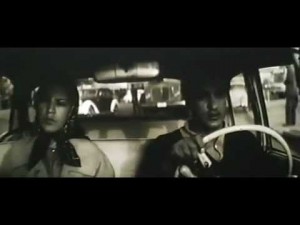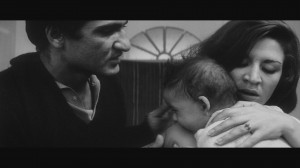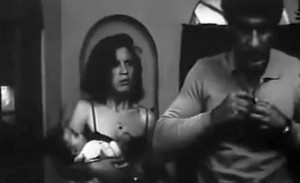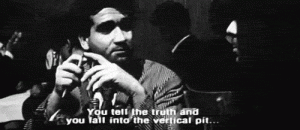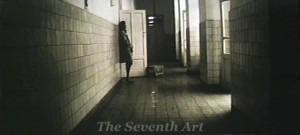Written for a booklet distributed at the 2018 Venice International Film Festival. — J.R.
Most people reading these words have likely heard about the Iranian New Wave, which conjures up such names as Kiarostami, Makhmalbaf, and Panahi. But until recently, Westerners who have heard about the first Iranian New Wave, whose names include Farrokhzad, Golestan, Kimiavi, and Saless, have been few and far between. Apart from the belated availability in the West of Forough Farrokhzad’s 1962 short film The House is Black, this watershed prerevolution movement in Iranian cinema has almost been lost to history due to the abrupt European exiles of many of its other major artists — Ebrahim Golestan to England, Parviz Kimiavi to France, and Sohrab Shahid Saless to Germany. (Bahram Beizai, Dariush Mehrjui, and Amir Naderi are among the few filmmakers who might be stylistically associated with both waves, but given how seldom their own prerevolution films are seen nowadays, apart from Mehrjui’s The Cow, it’s difficult to say much about them.) Arguably even more innovative as well as more modernist than the second New Wave, and virtually contemporaneous with the French New Wave, Farrokhzad’s The House is Black (1962), Golestan’s Brick and Mirror (1963-64), Kimiavi’s The Mongols (1973), and Saless’ A Simple Event (1974) are masterworks that continue to speak to the present like few other films.
Brick and Mirror — the first Iranian feature to use direct sound (also employed in some sequences of The House is Black), which, along with the absence of a musical score (apart from the percussion behind the opening credits), broadens our sense of offscreen spaces — takes its title from the classical Persian poet Attar, who wrote, “What the old can see in a mud brick, youth can see in a mirror.” The philosophical implications of this are fully apparent in a tale of a young man who finds a baby girl in his cab and spends a night with his girlfriend debating what to do with the infant. Though this black-and-white ‘Scope film superficially resembles Italian neorealism, especially in its indelible look at Tehran street life and nightlife in the 60s, its spirit is a mix of Dostoyevsky and expressionism: minor characters periodically step forward to deliver anguished soliloquies, contributing to an overall lament both physical and metaphysical, at once environmental and spiritual.
Critic and film historian Ehsan Khoshbakht, who aptly calls Brick and Mirror “Iranian cinema’s first true modern masterpiece,” offers the following details on his film blog at https://notesoncinematograph.blogspot.com/2016/07/brick-and-mirror.html: “The film’s production began in the spring of 1963 with a small crew of five, and without a finished script. The only written part -– the driver and the woman in the ruins –- became the basis for the first shoot, followed by improvised scenes in the vegetable market of Tehran. The breakage of the anamorphic lens during the shooting of a scene in the Palace of Justice delayed production. On June 5, 1963, while the crew awaited the shipment of a new lens from France, a protest arose against the arrest of Ayatollah Khomeini. This added to the atmosphere of tension and fear depicted in the film.
“With production resumed, the sequence in Hashem’s room (comprising 40 minutes of the completed film) took five weeks to shoot, followed by a four-week shoot for the precinct and orphanage scenes. The film was premiered on January 12, 1966 at the Radio City cinema in Tehran. It played there for three weeks, but was dismissed by critics as ‘arty’ and ‘pretentious’. Those who saw Brick and Mirror as a realist film were baffled by the long soliloquies given by characters….The soliloquy form reflects both Golestan’s regard for Orson Welles and the oral storytelling and frequent use of metaphor in Persian culture.”
An important literary figure in Iran, Golestan is celebrated both for his short stories and for his Persian translations of American literature, including Huckleberry Finn and works by Stephen Crane, William Faulkner, Ernest Hemingway, and Eugene O’Neill. In 1956 he set up his own film-production business to make “industrials” for oil companies and gradually branched out, releasing increasingly ambitious films through the mid-60s (including The House Is Black). Judging from the five shorts I’ve seen from this period, his remarkable development is comparable in some ways to Alain Resnais in France during the previous decade.
Golestan has made only two features, Brick and Mirror and The Secret of the Treasure of the Jinn Valley (1972). Only seven years separate them, but they hardly seem the work of the same man. Jinn Valley, a satirical, allegorical farce about a peasant corrupted by wealth, is interesting for its brassy visual style and what it says about Golestan’s escalating rage toward the shah’s regime, but it’s also bitter, misanthropic, and elitist.
Brick and Mirror, by contrast, offers a devastating portrayal of hypocritical intellectuals and diverse functionaries preaching altruism. Its tragic narrative, taking place over 24 hours and moving from a brisk first half to a slower second half, shows us a Tehran radically different from anything we’ve seen in the second Iranian New Wave — especially in an early nightclub scene featuring a woman dancing onstage, at least one allegedly gay audience member, and a lot of bohemian atmosphere. For both its exposure of the trivial, pseudo-philosophical blather and sophistry of the so-called intelligentsia and its supple mise en scène, this sequence is masterful. The following scene at the police station is no less withering and powerful, and for all the differences between their respective characters, the 40-minute sequence in Hashem’s room that comes just afterwards begs comparison with Godard’s Breathless and Contempt in its extended charting of the multiple fluctuations in a couple’s uneasy relationship within a confined space. And once daylight finally arrives, the film’s relentless charting of institutional failures within the bustle of Tehran in the early 60s becomes an epic indictment of the society as a whole.
What’s deceptive about the film is the way it combines its neorealist approach with visual and dramatic modes that suggest expressionism and metaphysics. The story opens at night with a cabdriver named Hashemi (Zackaria Hashemi) listening to a man on the radio read a story set in a nocturnal forest. (The voice and story both belong to Golestan, who also delivered the prosaic portion of the narration in The House Is Black.) Hashemi picks up a woman (Farrokhzad, seen only obliquely in a cameo) who directs him to a dirt road on a hillside leading up to army barracks. After dropping her off, he discovers she’s left a baby girl in the backseat. Clutching the baby, he runs after the woman and suddenly finds himself at the head of a steep stairway descending into darkness. Three quick jump cuts moving down the steps and away from him emphasize his paralysis and isolation. He eventually winds up at a huge construction site, no less theatrically lit, speaking to a homeless woman in a scene whose ambience briefly recalls Orson Welles’s The Trial.
We move next to the noisy nightclub where Hashemi, baby in tow, explains his dilemma to a group of flippant, dandyish friends and acquaintances as well as to his girlfriend, Taji (Taji Ahmadi). Later, at a police station, he’s advised to take the baby to an orphanage if no one claims her by morning. Taji meets Hashemi there and insists on returning with him to his one-room flat, where they spend an uneasy night: he’s paranoid that the neighbors will jump to conclusions about his sex life, she’s anxiously hopeful that they’ll keep the baby and get married.
The film’s emotional climax occurs the next morning, with Taji alone in the orphanage. It’s an extraordinary sequence, alternating documentary footage of orphans looking at the camera with Taji’s playful and compassionate responses to them, and culminating with a powerful tracking shot that moves down an endless corridor away from her. Formally it’s a precise complement to the earlier jump cuts, as slow and meditative as those were rapid and breathless, each locating a protagonist in a wider world while standing on the brink of inconsolable grief.

